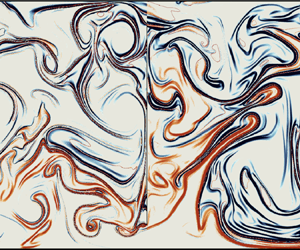No CrossRef data available.
Article contents
Decomposition of available potential energy for networks of connected volumes
Published online by Cambridge University Press: 09 June 2021
Abstract

A decomposition of available potential energy is derived for Boussinesq fluid flow in networks of connected control volumes. The two constituent parts of the decomposition are positive definite and therefore meaningful representations of available energy. The first (inner) part accounts for available potential energy that is intrinsic to each control volume, while the second (outer) part accounts for the context provided by the larger parent volume to which each smaller control volume belongs. While the intended application casts the control volumes as connected rooms in a building, the formulation can be applied to any domain that is partitioned by either physical boundaries or abstract zones and can be invoked recursively to clarify the hierarchical dependence of available potential energy on scale and context. By deriving budgets for the decomposition, two ways in which available potential energy can be redistributed between its inner and outer parts are identified. The first accounts for an apparent generation of available potential energy due to diapycnal mixing within a control volume that is constrained by removable boundaries. The second involves the reversible conversion between inner and outer parts that occurs when mass or heat is transported between control volumes and accounts for the concomitant change in context. Analytical expressions are derived for the hierarchy of contributions to available potential energy in an example involving three connected spaces, before budgets for the decomposition from a direct numerical simulation are analysed. Finally, the dependence of mixing efficiency on remote regions that was identified by Davies Wykes et al. (J. Fluid Mech., vol. 781, 2015, pp. 261–275) is revisited to demonstrate the precise way in which the proposed decomposition quantifies context.
JFM classification
- Type
- JFM Papers
- Information
- Copyright
- © The Author(s), 2021. Published by Cambridge University Press





